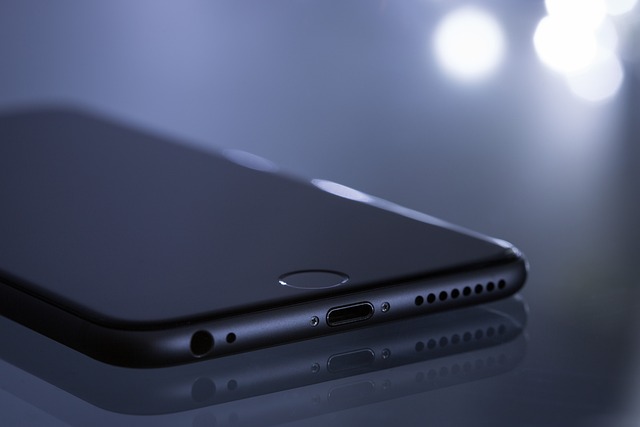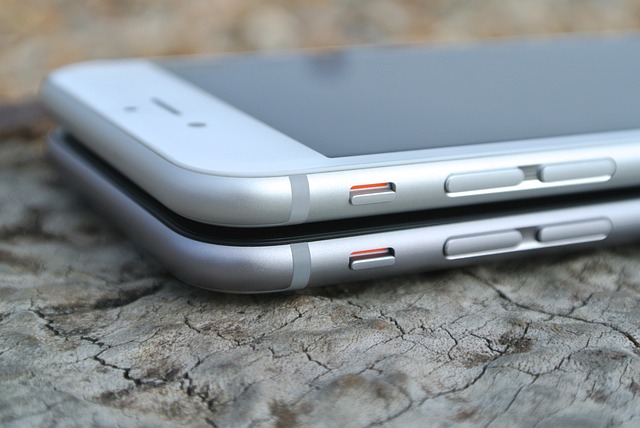To effectively replace an iPhone battery, you'll need a specialized toolkit including precision screwdrivers, a suction handle, spudgers, and pentalobe screwdrivers. The process involves carefully disassembling the screen assembly, safely removing the old battery, and installing a new one without causing electrical shorts or damaging other components. It's essential to perform this repair in a clean environment and follow safety protocols such as grounding yourself against static discharge, wearing safety gloves, and discharging the device beforehand. Utilizing authentic OEM parts is crucial for performance and reliability. Professional technicians should be well-versed in these procedures, often through specialized training programs that use genuine Apple parts and tools, ensuring they adhere to the latest safety and repair guidelines. Regularly updating your toolkit and part inventory with the latest industry resources will maintain a high standard of service for replacing iPhone batteries.
Embarking on the journey of iPhone repair, particularly in replacing an iPhone battery, requires a blend of skill and precision toolery. This article serves as a comprehensive guide for both novices and seasoned technicians looking to master the art of iPhone battery replacement. We will explore the fundamental knowledge needed, introduce the essential tools that facilitate safe and efficient repairs, and delve into a step-by-step process for battery replacement. Safety is paramount when handling delicate components, so we’ll cover necessary precautions. For professionals seeking to elevate their craft, insights on top-recommended tools and tips for sourcing quality parts will be invaluable. Additionally, we’ll touch upon the importance of training and certification for those aiming to offer professional iPhone repair services.
- Understanding the Basics of iPhone Repair and Battery Replacement
- Essential Tools for Every iPhone Battery Replacement Job
- Safety Precautions When Handling iPhone Components
- Step-by-Step Guide to Replacing an iPhone Battery
- Top Recommended Tools for iPhone Repair Technicians
- Tips for Sourcing Quality Tools and Parts for iPhone Repairs
- Training and Certification for Professional iPhone Repair Services
Understanding the Basics of iPhone Repair and Battery Replacement

When delving into iPhone repair, particularly focusing on replacing an iPhone battery, it’s crucial to have a solid grasp of the device’s structure and functionality. The iPhone, much like any advanced piece of technology, consists of delicate components that require precise handling. A common and frequently sought-after repair is the replace iphone battery service. This task demands specialized tools and a methodical approach to ensure the replacement is executed properly and safely. Basic tools for routine repairs typically include suction handles or adhesive removal tools for securely fastened parts, precision screwdrivers for various size screws, spudgers or plastic opening tools to pry open components without causing damage, and a set of pentalobe screw drivers due to the proprietary design of Apple devices. Each tool serves a specific purpose in the disassembly process, enabling technicians to access the battery without compromising other components. The replacement itself involves carefully removing the screen assembly, which houses the battery, and then proceeding with the removal of the old battery before installing a new one. It’s imperative that the replacement is done in a clean and controlled environment to prevent any risk of electrical shorts or damage to adjacent components. Moreover, understanding the model-specific battery configuration and safety protocols is essential to successfully perform this repair. With the correct tools and knowledge, replacing an iPhone battery can be accomplished with confidence, ensuring the device operates efficiently and safely post-repair.
Essential Tools for Every iPhone Battery Replacement Job

When embarking on an iPhone battery replacement job, having the right set of tools is paramount to ensure the process is efficient and the device is repaired safely. The most essential tool for this task is a suitable prying tool or spudger, which will help in lifting the screen from the chassis without causing damage to either component. This delicate operation requires a tool with enough precision to navigate the tight spaces around the battery and display assembly. A set of plastic opening tools is often recommended as they provide leverage and control while gently separating the components.
In addition to the initial prying tool, a high-quality suction handle or adhesive remover is crucial for effectively removing the screen from the phone. The adhesive used on newer iPhone models can be particularly strong, making it difficult to proceed without proper adhesive remover solutions. Once the screen is removed, a set of precision screwdrivers becomes essential, as they are required to remove the screws securing the battery and other internal components. It’s important to have variously sized and shaped screwdrivers to accommodate different models and generations of iPhones. Furthermore, anti-static materials and a cleaning brush or compressed air canister will aid in handling the delicate battery and in clearing any dust from the replacement process. By having these tools at the ready, iPhone technicians can perform a battery replacement with confidence, ensuring the longevity and functionality of the device post-repair.
Safety Precautions When Handling iPhone Components

When handling iPhone components, especially during a task like replacing an iPhone battery, safety should be your top priority. Proper precautions are necessary to prevent electric shock, which can occur due to exposure to live electrical components. It’s crucial to discharge the device’s battery before beginning the repair to minimize the risk of accidental electrical current. Additionally, using anti-static tools and wearing conductive wrist straps connected to an unpowered grounding pad will help protect both the delicate electronics and yourself from static discharge that could damage the components or cause harm.
Safety gloves are also recommended to shield your hands from sharp objects and potential chemicals found within the iPhone. Ensure you have a well-lit workspace to clearly see small parts and avoid mistakes that might lead to further damage or injury. Always refer to the iPhone’s service manuals provided by Apple for specific safety guidelines tailored to each model. Following these safety measures will not only preserve your health but also ensure the integrity of the iPhone components during replacement tasks such as the iPhone battery, thereby increasing the likelihood of a successful repair.
Step-by-Step Guide to Replacing an iPhone Battery

When tackling an iPhone battery replacement, having the right tools is paramount to ensure a successful repair. Before beginning, gather a set of precision screwdrivers with various tip sizes, a spudger or plastic opening tool, suction cup handles, a pentalobe screwdriver, a tri-point screwdriver, and tweezers. These tools are essential for the step-by-step process of disassembling your iPhone to access the battery. Start by powering down your device and removing the back cover. Use the plastic opening tool to gently lift the screen from the frame, being careful not to detach the LCD or display cables. Next, employ the suction cup handles to create a lever for removing the screen assembly from the phone’s chassis. Once the screen is free, carefully set it aside and proceed to remove the screws securing the battery to the device. Here, the pentalobe screwdriver comes into play. With the battery now exposed, use tweezers to safely disconnect the battery cables before carefully removing and replacing the battery with a new one. Reassembling the phone is the reverse of this process, requiring you to connect the new battery, secure it in place with the appropriate screws, and meticulously reattach each component. Throughout this process, refer to the official Apple service documentation or reputable repair guides for specific model instructions. By following these steps with precision tools at your disposal, you can confidently replace an iPhone battery and restore your device’s peak performance.
Top Recommended Tools for iPhone Repair Technicians

iPhone repair technicians require a precise set of tools to perform repairs efficiently and effectively. When it comes to replacing an iPhone battery, for instance, having the correct toolkit is paramount. The most recommended tool for this task is a high-quality suction cup with a rubber pad that adheres securely to the device’s screen without causing damage. This tool allows technicians to apply the necessary pressure to remove the screen assembly, which houses the battery. A pentalobe screwdriver set is also essential, as it fits the special screws found on most iPhone models. These screwdrivers enable precise handling of the screws that secure various components, including the back panel and the battery compartment.
In addition to these tools, a set of precision plastic opening tools, often referred to as spudgers or opening picks, is highly recommended for prying components apart without risking damage to delicate components like the display cables. A heat gun or soldering station with a fine-tipped soldering iron is necessary for battery replacements and other repairs that involve reworking solder connections. Lastly, a reliable rework station, which combines a hot air tool and a magnifying visor, can be invaluable for desoldering and resoldering tasks, ensuring the smallest components are handled with care. These tools, when used together, provide a robust solution for technicians specializing in iPhone repair, particularly for complex jobs like battery replacement.
Tips for Sourcing Quality Tools and Parts for iPhone Repairs

When embarking on an iPhone repair, especially a task as common as replacing an iPhone battery, sourcing high-quality tools and authentic parts is paramount for ensuring the longevity of both the device and your professional reputation. To begin with, opt for specialized kits designed for iPhone repairs. These kits typically include precision screwdrivers, suction handles for lifting displays, and prying tools tailored to the specific torque and pry angles required by Apple’s design. It’s advisable to invest in these kits from reputable manufacturers known for their durability and precision. Additionally, when it comes to iPhone batteries, prioritize purchasing genuine OEM parts. These batteries are crafted to match the original battery’s performance and capacity, ensuring that your repair delivers a comparable experience to the user. Authentic parts also mean less risk of damage to the device during the replacement process. To ensure authenticity, deal only with trusted suppliers or authorized distributors who provide certificates of authenticity for their products. Furthermore, staying informed about the latest tools and parts through industry forums, repair communities, and manufacturer updates can help you maintain a well-equipped workshop capable of handling even the most complex iPhone repairs with confidence. Regularly updating your toolkit and part inventory based on these resources will set you apart as a skilled and reliable technician in the field of iPhone repairs.
Training and Certification for Professional iPhone Repair Services

When delving into professional iPhone repair services, particularly for tasks like replacing an iPhone battery, the importance of specialized training and accreditation cannot be overstated. Adequate training ensures that technicians handle delicate components with precision and care, minimizing the risk of further damage or injury during the repair process. Certification programs specifically designed for iPhone repair provide a structured learning environment where candidates can gain hands-on experience with genuine Apple parts and diagnostic tools. These programs often follow the latest guidelines set forth by Apple, ensuring that certified professionals are well-versed in the nuances of modern iPhones and the intricacies involved in replacing an iPhone battery safely and effectively.
To perform a battery replacement with the highest level of competence, technicians must possess up-to-date knowledge of the iPhone’s design and hardware. This is typically acquired through certification courses that cover disassembly techniques, component identification, and reassembly procedures. These courses also emphasize safety protocols to handle lithium-ion batteries correctly and understand the risks involved in mishandling them. By obtaining such certifications, professionals affirm their expertise in iPhone repair, offering peace of mind to customers who entrust their devices to these services.
When embarking on an iPhone repair, whether it’s a routine replace iphone battery task or a more complex fix, having the right tools at your disposal is paramount. This article has outlined the essential knowledge and equipment necessary for any technician to perform safe and efficient battery replacements on iPhones. From understanding the intricacies of iPhone repair to sourcing quality tools and parts, the guide provides a comprehensive framework for both budding hobbyists and seasoned professionals. By adhering to safety precautions and utilizing the top-recommended tools, one can confidently tackle iPhone repairs with the assurance of maintaining device integrity and user safety. With the insights provided, anyone looking to replace an iPhone battery can do so with expertise and precision, ensuring a long-lasting repair experience for their device.
